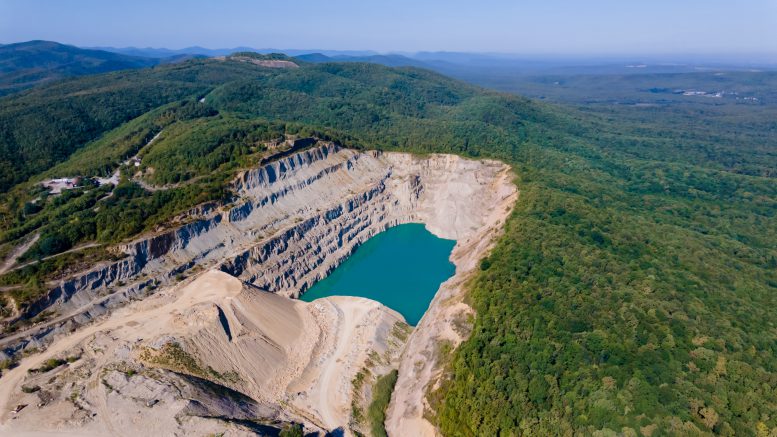We’re entering a new era of sustainability disclosure. June saw the much-anticipated launch of the International Financial Reporting Standards (IFRS) Sustainability Disclosure Standards by the International Sustainability Standards Board (ISSB). The standards mark a significant global shift in financially-relevant sustainability disclosure. Strong investor and regulator support, as well as G7 and G20 endorsement, suggest they will rapidly become expected and indeed even mandatory in many jurisdictions, including Canada and the United States, as soon as 2025.
Capital intensive industries like mining are likely to quickly adopt these investor-focused standards, but in doing so, may risk forgoing other strategic insights on sustainability risk and opportunity and miss chances for meaningful engagement. We cover what your company can expect and what questions to ask to ensure your materiality and disclosure efforts add value to your business.
Scope of the ISSB Standards
In the works since COP26 in November 2021, the inaugural standards — IFRS S1 and IFRS S2 — seek to provide a common language and single global baseline for investor-focused sustainability reporting to bridge the information gap between companies and investors. Individual jurisdictions can build on the standards to suit their requirements. The standards come into effect at the start of 2024. They will help companies to communicate their sustainability risks and opportunities in a robust, streamlined, comparable, and verifiable manner, providing high-quality decision-useful data to support stronger corporate strategy and more informed investor decision making.
The standards are designed to be applied together and will be part of a broader suite of sustainability standards. IFRS S1 is the general standard, providing a framework for companies to report on the financially-relevant sustainability risks and opportunities they face in the short, medium, and long term, as well as governance, strategy, risk management, and metrics and targets. This is supplemented by IFRS S2, which focuses on climate-related risks and opportunities. While future standards on additional material topics are expected, companies are advised to use the general standard guidance to report on them in the interim. ISSB has also offered companies relief from reporting on Scope 3 GHG emissions during the first year.
Alignment with existing standards
The ISSB standards are designed to complement and consolidate existing disclosure standards, amalgamating and building on the Task Force on Climate-related Financial Disclosures (TCFD) recommendations, Sustainability Accounting Standards Board (SASB) Standards, Climate Disclosure Standards Board (CDSB) Framework, Integrated Reporting Framework, and metrics from the World Economic Forum. The effort is likely to reduce the complexity, cost, and effort of reporting for companies operating in multiple jurisdictions or struggling to juggle multiple stand-alone frameworks.
The SASB Mining standards and TCFD in particular, have seen rapid uptake across the industry in recent years. Companies already reporting under these will have a head start in aligning with the new global baseline. If your company does not use SASB, you may wish to familiarize yourself with the Metals & Mining or Coal Operations standards and assess your readiness to align disclosure.
The ISSB aims to complement and be compatible with the longstanding Global Reporting Initiative (GRI) sustainability reporting standards, which meet the information needs of a broad range of stakeholders beyond capital markets. Ongoing close collaboration with jurisdictional standard setters, including the Canadian Sustainability Standards Board (CSSB), should also ensure harmonization and interoperability with incoming mandatory reporting requirements, eventually reducing the reporting burden for companies.
Potential drawbacks
For all the benefit of streamlining reporting into a global standard, the new standards have also sparked some concern. The ISSB refers to ‘sustainability-related financial disclosures’ stipulating their connection with financial statements and alignment with the IFRS accounting standards definition of “materiality.” Critics fear this focus on traditional financial materiality (how ESG and sustainability issues affect financial performance) ignores broader company impacts on society and the environment. Understanding what’s material from the latter perspective is impact materiality, and the combination of both types is referred to as double materiality.
The ISSB focus on investors and capital markets presents compatibility challenges for jurisdictions like the European Union, where a double materiality lens has explicitly been adopted in establishing mandatory disclosure requirements, especially on topics like GHG emissions, human rights and diversity. Moreover, the financial materiality lens means the standards do not effectively contemplate the information needs of other stakeholders. This can undermine company-stakeholder relationships and social acceptability, especially in an industry like ours that often struggles in this area. It also limits companies’ ability to consider and address broader evolving societal expectations of corporate sustainability performance.
Finally, the ISSB lens on what matters is strategically limiting. There is growing awareness that understanding and taking timely action on current and emerging systems-level impacts and risks (“outside the fence” impact materiality topics) are an intrinsic part of business resilience. The standards risk supporting a myopic approach to ESG investment and business strategy, limiting meaningful and effective goal-setting, innovation, and, ultimately, performance.
Implications for miners
The uptake of the Standards among miners will likely be extensive. The ISSB standards have strong support from investors and market regulators, including the International Organization of Securities Commissions (IOSCO), which represents over 130 national securities commissions, and the Principles for Responsible Investment network, which represents over US$120 trillion in assets under management. The Canadian Securities Administrators (CSA) has also issued a public statement of support. And given the standards build on existing frameworks that are already popular in our industry, investor audiences are likely to expect reporting to align even if your relevant operating jurisdictions do not.
However, miners should consider the caveats. The disclosure framework aspires to foster investor confidence and better risk management practices within the industry. But the narrow investor focus increases the chance of missing material sustainability-related challenges common within the mining industry, especially related to operational community and ecosystem impacts. While recognizing and benefiting from the specific objective of the ISSB Standards, it will be crucial for mining companies to consider the materiality of these broader challenges too, in order to effectively manage their sustainability risks.
Preparing for the future
To adequately prepare, early engagement and understanding of the standards will be crucial to facilitate a smooth transition and ensure compliance when they become effective. Further, companies will need to ensure they have established processes and controls to provide sustainability-related information of the same quality, and at the same time, as their financial statements, because concurrent filing of sustainability and financial disclosure is a key requirement of the ISSB.
Ultimately, the extent to which the new IFRS standards will reshape the landscape of corporate sustainability and ESG reporting remains to be seen. But current support is strong and additional standards on material topics including biodiversity, ecosystem services, human capital and human rights are expected soon. Companies that begin to prepare for alignment now will be better positioned to navigate evolving and emerging voluntary and mandatory sustainability and ESG disclosure expectations. Simultaneously, strategic consideration and management of impacts on people and the planet will see responsible miners continue to benefit from a more holistic and robust approach to risk management and sustainability performance. Only then can companies and the industry as a whole chart a resilient path through the pressing challenges and opportunities of our time.
Elizabeth Freele and Rachel Dekker are the co-founders and managing partners of mining sustainability think tank and ESG consultancy Sympact. Sympact supports companies in ensuring their social performance and disclosures meet growing expectations through advisory services, training, and thought leadership products.






Be the first to comment on "A new era of ESG reporting: What miners need to know about the ISSB Standards"